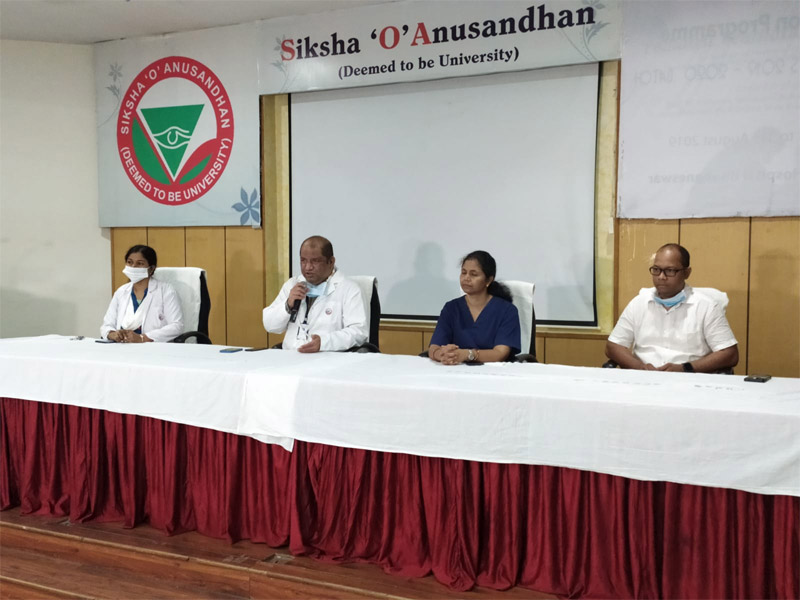Bhubaneswar: For the first time in Odisha, Institute of Medical Sciences and SUM Hospital, faculty of medicine of SOA Deemed to be University here, has successfully undertaken autologous stem cell transplantation on a Lymphoma patient.
The challenging procedure, often referred to as Bone Marrow Transplantation (BMT), was taken up on a 33-year-old patient suffering from Lymphoma, a type of blood cancer, recently by following the cryopreservation process, Prof. Priyanka Samal, Professor and Head of the department of Clinical Hematology and Hemato Oncology in the hospital, told media persons on Monday.
IMS and SUM Hospital is also the first hospital in the state to have undertaken Stem Cell Transplantation. Though the procedure was being done in the hospital since 2018, it was for the first time that stem cell transplantation was attempted on a Lymphoma patient, she said.
Prof. Samal said IMS and SUM Hospital had conducted 25 stem cell transplantations on patients with hematological malignancies like myeloma and leukemia within last 18 months though the pandemic virtually stalled all activities for several months. All the persons who had undergone the treatment were doing well till now.
Prof. Samal said the transplant team followed the cryopreservation methodology with constant Quality Check monitoring—a procedure in which cells and tissues were preserved for future use at a very low temperature of minus 80 degrees C. “The cells, which generally have two to three days viability, can be preserved for several months through this process,” she said.
Prof. Pusparaj Samantasinhar, Medical Superintendent of the hospital, Prof. Girija Nandini Kanungo, Professor and Head of the department of Transfusion Medicine and Dr. Santosh Kumar Singh, In-charge of Hematology ICU were present during the media briefing.
Explaining the procedure, Prof. Samal said Stem Cell Transplantation required no surgery. “Stem cells are predominantly present in the bone marrow constantly dividing and maturing into various types of blood cells replacing the old and worn out cells in the body. Serious health problems like blood cancer arise when the function of stem cells goes awry,” she said.
“Presently, we have drugs which mobilize these cells from the bone marrow to the peripheral blood and the process is called stem cell mobilization. These healthy stem cells are collected from the donor or the patient following mobilization,” Prof. Samal said.
Then high dose chemotherapy is administered to the patient as conditioning regime to destroy the existing bone marrow cells and create space for receiving the stem cells and accommodating its differentiated healthy mature cells.

After five to ten days of intensive chemotherapy, stem cells collected from the healthy patient or donor are infused into the body of the patient. When the patient’s own harvested stem cells are infused, it is known as autologous stem cell transplantation while in allogeneic transplantation, stem cells are received from a donor, Prof. Samal said.
Stem cell transplantation is preceded by chemotherapy for about four to six months to ensure that the patient has minimal measurable cancer cells. The procedure is mostly done to ensure that the disease does not relapse, Prof. Samal said “we wish to provide the benefit to all transplant eligible patients.”
Prof. Kanungo said the preservation of stem cells by using the cryopreservation process required extraordinary effort and quality control to ensure success of the transplantation process.
Prof. Samantasinhar said the departments of Transfusion Medicine, Lab Hematology, Microbiology and ICU were involved in conduct of stem cell transplantation. “We have been putting a lot of emphasis on teamwork,” he said adding IMS and SUM Hospital was trying to extend cutting edge treatment to the people of the state at an affordable cost.
Dr. Singh said the nursing staff and paramedics played a crucial role in ensuring success of the treatment with maintenance of strict asepsis, as it was a prolonged process with very low blood cell counts.

